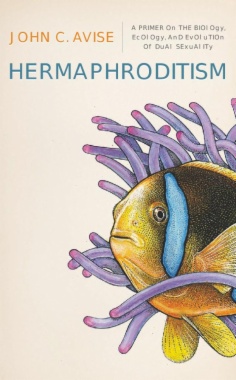While it is true that members of most sexually reproducing species can be defined as either male or female, those who belong to the rest of the biological world are not so simply understood. Hermaphroditic creatures reproduce both as male and as female individuals, providing a fascinating glimpse into alternative sexual practices in nature and their ecological and evolutionary successes and failures.
Eloquently written by an award-winning biologist and pioneer in molecular ecology, this primer on hermaphroditism traces the phenomenon throughout Earth's myriad species, accounting for the adaptive significance of alternative sexual systems. Accessible and richly illustrated, the text maps the evolutionary origins of hermaphroditism, as well as its historical instances and fictional representations, underscoring the relevance of dual sexuality to our biological, intellectual, and cultural making. John C. Avise describes the genetics, ecology, phylogeny, and natural history of hermaphroditic plants, fish, and invertebrate animals and details organisms that either reproduce simultaneously as male and female or switch routinely between one sex and the other. Filled with surprising creatures and compelling revelations, this textbook stands alone in its clear yet comprehensive treatment of hermaphroditism and its unique challenge to the supremacy of separate sexes.
- CONTENTS
- PREFACE
- The Phenomenon of Dual Sexuality
- Hermaphroditism in Fiction
- Hermaphroditism in the Real World
- CHAPTER ONE: Two Sexes in One
- Maleness and Femaleness
- Anisogamy and the Separate-sex Condition
- Evolutionary Origins
- Evolutionary Ramifi cations
- Sex Ratios in Separate-sex Taxa
- Relationship to Sexual Selection and Mating Systems
- Impact on Demographic Parameters
- Sex Ratios in Hermaphroditic Taxa
- Hermaphroditism Versus Separate Sexes
- Fitness Considerations
- Mating Systems and Related Phenomena
- Sex Allocation
- Phylogenetic Legacy Versus Contemporary Adaptive Significance
- SUMMARY
- CHAPTER TWO: Dual-sex Plants
- Terminology
- Alternative Sexual Systems: Natural History and Examples
- Hermaphroditism
- Monoecy
- Andromonoecy
- Gynomonoecy
- Gynodioecy
- Androdioecy
- Trioecy
- Sex-changers
- Dioecy
- Cosexuality Versus Dioecy
- Ecological Considerations
- Phylogenetic Character Mapping
- Transitional States
- An Evolutionary Enigma
- Selfing Versus Outcrossing
- Inbreeding
- Coadapted Genotypes
- Fertilization Insurance
- Sex Allocation
- Sexual Selection in Plants
- SUMMARY
- CHAPTER THREE: Dual-sex Invertebrates
- Biological Examples
- Reef-building Corals
- Love-dart Snails, Earthworms, and Sea Slugs
- Sperm-storing Freshwater Snails
- Sex-changing Limpets, Isopods, and Polychaetes
- Androdioecious Clam Shrimps and Gynodioecious Sea Anemones
- Protandric Simultaneously Hermaphroditic Shrimps
- Quasi-asexual Flatworms
- Other Oddities
- Sex Determination and Pseudohermaphroditism
- Evolutionary Histories: Gonochorism and Hermaphroditism
- Phylogenetic Character Mapping
- Gynodioecy and Androdioecy
- Genetics
- Selective Pressures
- Selfing Versus Outcrossing
- Genetic Considerations
- Ecological Considerations
- Joint Genetic and Ecological Considerations
- Sex Allocation in Simultaneous Hermaphrodites
- Selfing and Allocation to Female Function
- Stress and Allocation to Male Function
- Local Mate Competition
- Local Resource Competition
- Brooding Constraints
- Intra-individual Trade-offs
- Sexual Conflicts
- Other Factors
- Sex Allocation in Sequential Hermaphrodites
- The Size-advantage Hypothesis
- Mating Systems
- Conclusions About Sex Allocation Theory
- Sexual Selection
- SUMMARY
- CHAPTER FOUR: Dual-sex Vertebrates
- Sexual Flexibility
- Evolutionary Lability
- Ontogenetic Plasticity
- Sequential Hermaphroditism
- The Cast of Players
- Evolutionary History
- Adaptive Significance of Alternative Modes
- Simultaneous Hermaphroditism
- The Cast of Players
- Evolutionary Constraints
- Mating Behaviors in Outcrossers
- Self-fertilization
- History of Genetic Research on the Mangrove Rivulus
- Adaptive Significance of Selfing
- SUMMARY
- GLOSSARY
- REFERENCES CITED
- INDEX

